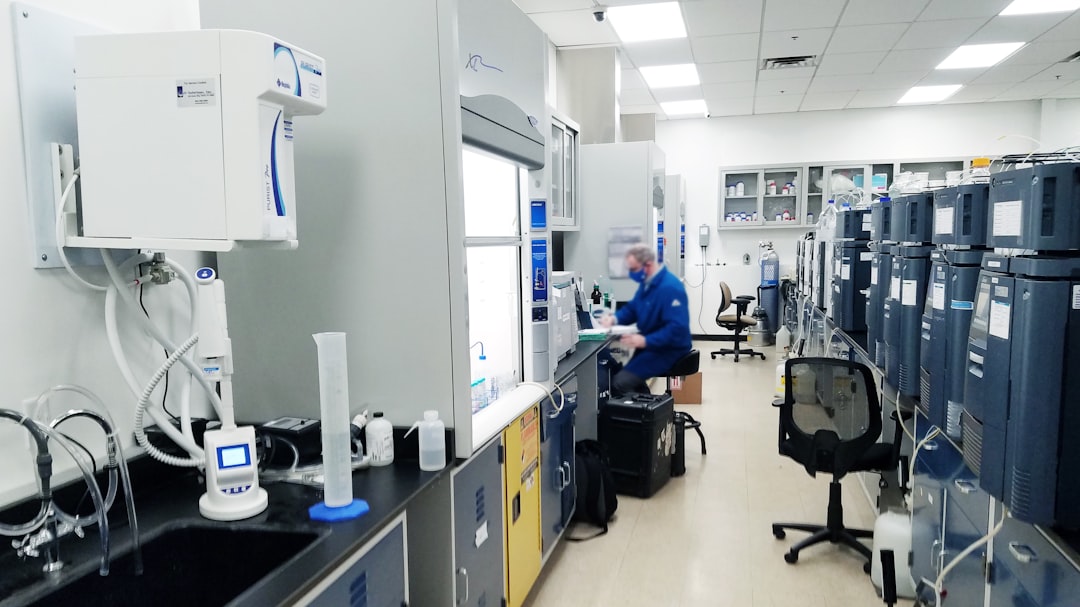What is it about?
Here, we present a simple yet powerful approach for the fabrication of water droplet arrays and the assembly of photonic crystal bead arrays based on hydrophilic−hydrophobic patterned substrates. Various integral arrays are simply prepared in a high-quality output with a low cost, large scale, and uniform size control. By simply taking a breath, which brings moisture to the substrate surface, complex hydrophilic−hydrophobic outlined images can be revisualized in the discontinuous hydrophilic regions. Integration of hydrogel photonic crystal bead arrays into the “breath-taking” process results in breath-responsive photonic crystal beads, which can change their colors upon a mild exhalation.
Featured Image
Why is it important?
Surfaces patterned with hydrophilic and hydrophobic regions provide robust and versatile means for investigating the wetting behaviors of liquids, surface properties analysis, and producing patterned arrays. However, the fabrication of integral and uniform arrays onto these open systems remains a challenge, thus restricting them from being used in practical applications.
Perspectives
This state-of-the-art technology not only provides an effective methodology for the preparation of patterned arrays but also demonstrates intriguing applications in information storage and biochemical sensors.
Professor Xuemin Du
Shenzhen Institutes of Advanced Technology (SIAT), Chinese Academy of Sciences (CAS)
Read the Original
This page is a summary of: Breath-Taking Patterns: Discontinuous Hydrophilic Regions for Photonic Crystal Beads Assembly and Patterns Revisualization, ACS Applied Materials & Interfaces, October 2017, American Chemical Society (ACS),
DOI: 10.1021/acsami.7b10359.
You can read the full text:
Contributors
The following have contributed to this page










